The U.S. Navy has successfully carried out four launches of unarmed Trident II D5 missiles.
The tests took place from 17 to 21 September, when an Ohio-class ballistic missile submarine launched the missiles from a submerged position off the Florida coast into the Atlantic.
The launches marked the 197th consecutive successful test flight of the Trident II system. One evening firing lit up the skies and was visible as far away as Puerto Rico. Notices to Mariners and Airmen were issued in advance, establishing safety zones across the missile range.
“Our Nation’s submarine launched ballistic missile system has been a critical component of our national security since the 1960s, and these launches continue to demonstrate the credibility and reliability of our strategic deterrence capabilities,” said Vice Adm. Johnny R. Wolfe, Director of the Navy’s Strategic Systems Programs (SSP).
The Trident II has been in service since 1990 with both the U.S. Navy and Royal Navy, providing the sea-based leg of the nuclear triad. Developed by Lockheed Martin Space, the three-stage, solid-fuel missile is among the most powerful strategic weapons ever fielded. It has an estimated range exceeding 7,500 miles, travels at speeds of up to Mach 24, and can deliver multiple independently targetable warheads with an accuracy of around 100 metres.
The weapon can be fitted with a range of warheads, from the W88 with a yield of 475 kilotons to the smaller W76-2 low-yield option, with the British Holbrook variant used on the UK’s Vanguard-class submarines. A planned W93/Astraea warhead will extend the system’s future.
Originally fielded in the 1980s, the Trident II underwent a life-extension programme in 2017, extending its service life into the 2040s. Wolfe highlighted both the continuity and the forward-looking aspect of the programme. “For the dedicated SSP team, maintaining our current capability and actively demonstrating through flight testing that the system is ready to respond if called upon is central to ensuring our nation’s Peace through Strength. The team is also pushing ahead developing the next generation strategic weapon system to ensure the sea-based deterrence capability of tomorrow,” he said.
The U.S. Navy stressed that the tests were routine and unrelated to ongoing world events. Nonetheless, the launches underline the enduring importance of the U.S. and UK’s continuous at-sea deterrent, with the Trident II remaining at the core of NATO’s nuclear posture.


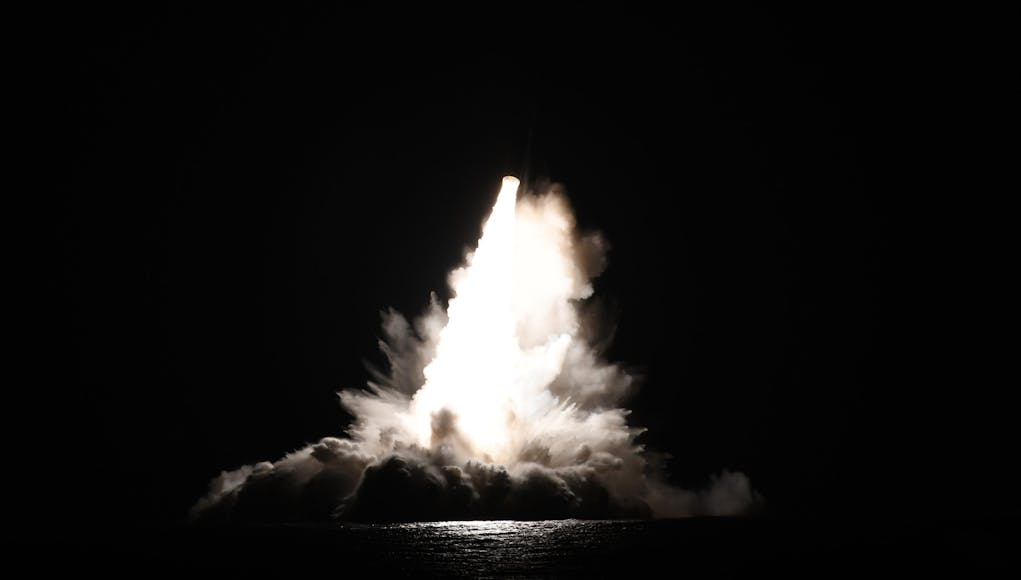


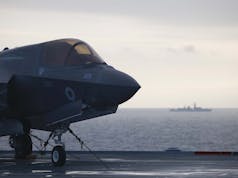
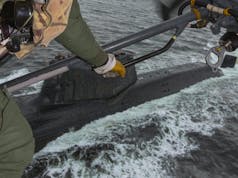

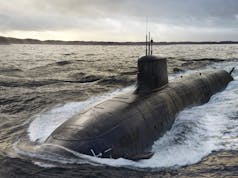


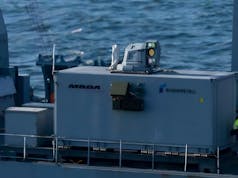


” The launches marked the 197th consecutive successful test flight of the Trident II system. ”
Not in Royal Naval service it’s not. Now is that because we are shite at testing them or is it because we are just shite.
Neither.
What do the Yanks do correctly that we can’t seem to mirror? last 2 tests have failed with one of the missiles going of course, and one not even igniting. It brings into question the whole capability.
When I read your post I thought I’d look deeper.
From the IISS, brings things into perspective.
I have tried Dern’s trick of spacing out the links to get around link purgatory.
https://www.iiss. org/online-analysis/ online-analysis/2024/03/the-uks-trident- launch-failure-a-cause-for-concern/
Made a reply but it’s in moderation as it had a link.
Because we don’t test and test again to demonstrate success to the outside world.
We used to do that to prove the point.
Perhaps you should tell us why the 2024 and 2016 test launches failed? Grant us the full majesty of you insight.
It’s public information, one veered off course and had to be destroyed before it got close to the continental US, and the other failed to ignite and fell into the sea.
That doesn’t tell you why they failed, it tells you slightly more about the manner of the failure. The ‘why’ is not public information for obvious reasons. The missiles themselves are from a common pool with the US and are frequently rotated, so there is little possibility of ‘our’ missiles having any problem that the USN doesn’t. The launch systems are also common to both navies. The practical details of the tests aren’t known to the public, so it is impossible to say whether they are cause for concern or not. Certainly there is no evidential basis for asserting that ‘we are just shite’. If you want to know what ‘shite’ looks like you should look at the test failure rates for the Russian Bulava SLBMs.
It was publicly confirmed by the British government that the test failed due to test equipment attached to the missile and that the crew, boat and missile all performed properly.
The UK uses a different warhead and I believe the dummy warheads are where the test equipment is, so i assume the RN use a different mock warhead than the american one.
I suspect you’re right. It was stated that the equipment that malfunctioned was American and not British.
None of you have any clue… And the UK is 100% dependent on the United States which can be ended in a heartbeat sorry about the independent nuclear thing but that hasn’t existed for 50 years
So just to be clear you knew it was the missiles at fault and you still wrote a load of cobblers!🙄
Oh dear! Here we go,now then BOTH of the missiles cleared the boat on firing,first one was drifting of course and was terminated by the range safety officer,second had a malfunction AFTER launch and the motor did not ignite! All been discussed before👍
Whoosh Bang and Whoosh Plop.
Boat gets to launch site; BZ Ops Team.
Boat comes to the hover; BZ Stokers.
Gyros spin and missile leaves the boat; BZ WEs.
Missile’s motor fails to ignite or missile turns into a big Catherine Wheel; everybody in the boat’s control room turns to look at the guys from Lockheed Martin and the USN Strat Weapons Facility; you can hear a pin drop….
“One Ping” ?
The UK’s effective nuclear deterrent is no longer assured. Both the Conservatives and Labour governments are to blame. The good news is that the Russian deterrent is also pretty flakey. Going forward, I’m not sure the US will continue to partner with us, because of comments by people like Sadiq Khan. Europe is no longer viewed in the US as a robust ally.
And you think the US is looked on as a reliable ally by Europe?
You’re right, it goes both ways.
Hmmm… virtually regardless of perceived future reliability, there is also the matter of a practically diminished nuclear deterrent capability by both the RN and USN. There will be four Dreadnought class SSBNs, each equipped w/ twelve Trident II missile tubes, versus the sixteen on-board the four existing Vanguard class SSBNs. Similarly, there are twelve Columbia class SSBNs planned for USN, each w/ sixteen tubes, versus the fourteen Ohio class, each equipped w/ twenty operational missile tubes (remaining four tubes disabled per treaty requirement). All other factors held equa,l that equates to a one third decrease in survivable deterrent capability during a timeframe wherein the CRINK axis nuclear capability will be significantly increasing. Fortunately, USN will be developing SLCM-N which could theoretically equip all Virginia class and RN SSN-A class SSNs (nominally post 2034), and perhaps most/every surface escort equipped w/ MK-41. Additionally, USAF will have LRSO deployed w/ 100+ B-21s, plus an indeterminate number of upgraded BUFFs. Hopefully GCAP/Tempest will be dual-capable w/ a weapons bay which can accommodate LRSO or a comparable UK designed weapon. This however presumes that a number of development programmes remain on published timelines. 🤔😳🤞
And, how many of those tubes actually have missiles in them when the subs go out? I wouldn’t be surprised if Tempest never operates in the nuclear role… that’s left for the F-35.
I wonder, are we doing discreet testing in case we have to build our own missiles?!
Rumour alert.
Nice test, nice result, and a poke in the eye for the UK mebbe?
I bet theirs all worked…
UK needs additional alternate/backup delivery system to subs as detection tech improves. Long range stand-off air-launched ballistic and cruise, with continuous-in-the-air during times of most threat. As per Sky’s war Game scenario, the UK needs to quickly re-arm and have a much stronger conventional deterrent to stop having to go for the nuclear option in case of a minimal conventional attack by Russia (or whoever).
I’m still waiting for the UK order for 40+ Typhoons for starters…
…and Euro/NATO needs to cough-up their fair share to the UK for such a nuclear umbrella.